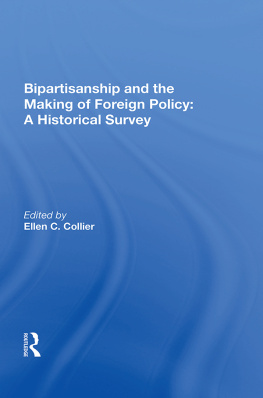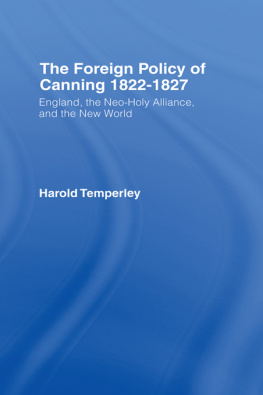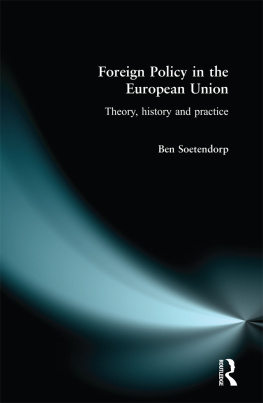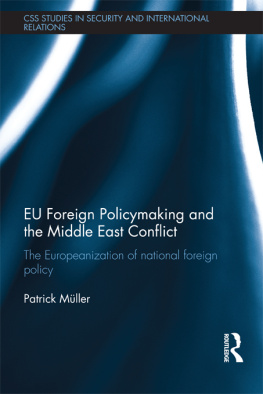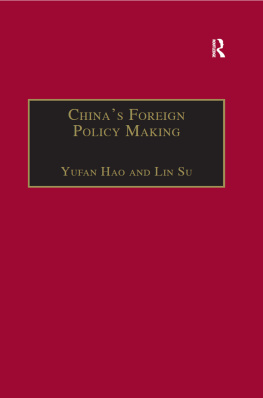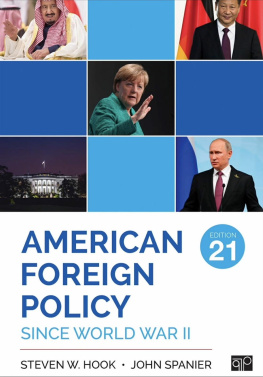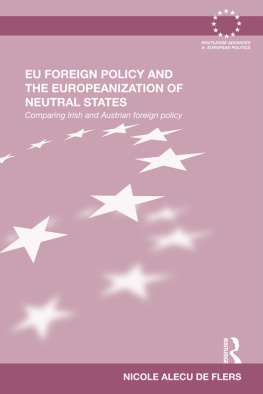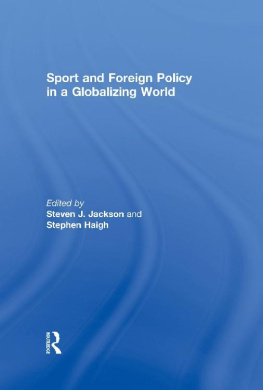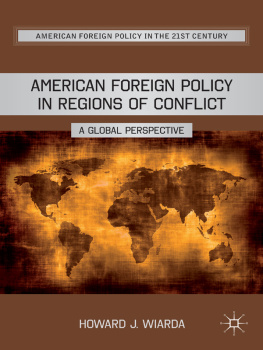Bipartisanship and the Making of Foreign Policy: A Historical Survey
First published 1991 by Westview Press
Published 2018 by Routledge
52 Vanderbilt Avenue, New York, NY 10017
2 Park Square, Milton Park, Abingdon, Oxon OX14 4RN
Routledge is an imprint of the Taylor & Francis Group, an informa business
Copyright 1991 by Taylor & Francis
All rights reserved. No part of this book may be reprinted or reproduced or utilised in any form or by any electronic, mechanical, or other means, now known or hereafter invented, including photocopying and recording, or in any information storage or retrieval system, without permission in writing from the publishers.
Notice:
Product or corporate names may be trademarks or registered trademarks, and are used only for identification and explanation without intent to infringe.
Library of Congress Cataloging-in-Publication Data
Bipartisanship and the making of foreign policy : a historical survey
/ edited by Ellen C. Collier.
p. cm.
ISBN 0-8133-8149-5
1. United StatesForeign relations administationHistory.
2. Executive powerUnited StatesHistory. 3. Legislative power
United StatesHistory. I. Collier, Ellen C. (Ellen Oodfelter),
1927.
JX1706.B57 1991
353.0089dc20
91-7172
CIP
ISBN 13: 978-0-367-01613-5 (hbk)
To Ed--
marriage teaches bipartisanship.
Contents
PART ONE
BIPARTISAN FOREIGN POLICY AND POLICYMAKING SINCE WORLD WAR II
PART TWO
DOCUMENTS ON BIPARTISAN FOREIGN POLICYMAKING
PART THREE
STRENGTHENING EXECUTIVE-LEGISLATIVE CONSULTATION ON FOREIGN POLICY
Guide
Bipartisan foreign policymaking has almost become a lost art. It flourished for a short period at the end of World War ll, but since that time has been rare. The executive and legislative branches and both major political parties in the United States have cooperated and compromised for short periods on foreign policy when necessary to achieve specific purposes. Yet in recent years they have seldom made concerted efforts from the outset of a new international problem to develop a bipartisan policy.
After the initial post World War ll period, Presidents seemed less willing to bring Congress into the formulation of policies at an early stage. The decline in efforts at bipartisan foreign policymaking became apparent during the Korean War. Later, the Vietnam War served as a watershed in legislative-executive relations that heightened distrust between the branches and convinced Congress of the need to reassert its power in foreign policy. In addition, recurrent divided government, in which the President belongs to one party and the majority of Congress belongs to the other, gave many legislative-executive conflicts a partisan tone.
Few observers dispute the success of the early bipartisan planning that began with the United Nations and continued through the Marshall Plan and the North Atlantic Treaty and other regional security treaties. Because those core foreign policies endured with strong support for many years, it seems fruitful to reexamine the methods by which they were developed. In the past some observers have contended that past methods would not work because it was a unique set of circumstances at the end of the Second World War, not the mode of policy-making, that fostered basic consensus. Now changes in the Soviet Union and other world events have brought a new set of comparable circumstances. Now as then a unique situation exists in which old policies are clearly outdated and new policies are required. The situation warrants efforts to create a new post-Cold War foreign policy with the same deliberation that occurred at the end of the Second World War.
Even before the transformation of Eastern Europe, at the beginning of 1989 both executive branch leaders and Members of Congress called for renewed efforts at bipartisanship in foreign policy. They remembered bitter legislative-executive disputes in the Reagan Administration that impeded unified and consistent policies in such areas as Central America and South Africa. A brief glimmer of the potential reappeared with the bipartisan accord on Central America in March 1989.
Calls for a bipartisan foreign policy often evoke varying reactions. Some view the desirability of a foreign policy supported by both political parties as self-evident on grounds that it provides strength and continuity. Others contend that the phrase has been used to stifle criticism and cloud accountability for a policy. Such different reactions are not surprising because the term bipartisan foreign policy has many meanings, and experience has revealed both strengths and weaknesses. The challenge is to develop a bipartisan policy without dampening criticism or closing the policy to revision.
of this book examines the various meanings and reviews the history of bipartisan foreign policymaking since World War II. It explores major issues involved including the appropriate roles for the President and Congress in foreign policy, whether policy differences follow party lines, and whether politics can or should be separated from foreign policy any more than from domestic policy. It also reviews techniques used for making a bipartisan foreign policy. The study was prepared as a report for Congress published by the Congressional Research Service of the Library of Congress.
Japanese Peace Treaty. Also included as a model is the 1989 bipartisan agreement on Central America. A second group contains excerpts from three speeches on the Senate floor that illustrate the importance of criticism and the pressure Members may feel not to criticize a foreign policy that is called bipartisan.
discusses legislative-executive consultation on foreign policy, one of the key components of a bipartisan foreign policy. The study examines the continuing lack of adequate consultation of Congress by the executive, the apparent barriers to consultation, and options that both the legislative and executive branches might take to strengthen consultation. This was the final report in a series of studies on consultation published by the House Foreign Affairs Committee. Its preface further describes the consultation project and acknowledges the many people involved.
Ellen C. Collier
Part One
Bipartisan Foreign Policy and Policymaking Since World War II
(Adapted from a study written by Ellen C. Collier and published by the Congressional Research Service, Library of Congress, November 9, 1989, as a CRS Report for Congress.)
1
Introduction
Recently a new set of foreign and domestic conditions has led many to call for a new bipartisan foreign policy. Abroad, many of the circumstances on which the original post-World War II bipartisan foreign policy was based have been altered. At home, legislative-executive conflicts have frequently been seen as impeding effective foreign policymaking.
First, at the international level, basic changes have occurred that, for some observers, make many U.S. policies obsolete or inadequate. Suddenly the Cold War virtually ended as Soviet President Gorbachev introduced policies of economic restructuring, openness leading to more political freedom, and new thinking in international relations symbolized by the withdrawal of Soviet forces from Mghanistan in 1988. The new Soviet policies spilled over into Eastern Europe and led to a new Europe with a reunited Germany. More gradually, the United States relatively declined from the preeminent economic and technological position it had at the end of the Second World War as Western Europe and Japan prospered and newly industrialized nations emerged in Asia and Latin America. Environmental degradation, illegal narcotics, and international terrorism became national security concerns different from but, to many, no less real than the threat of aggression by the Soviet Union was in 1947.

